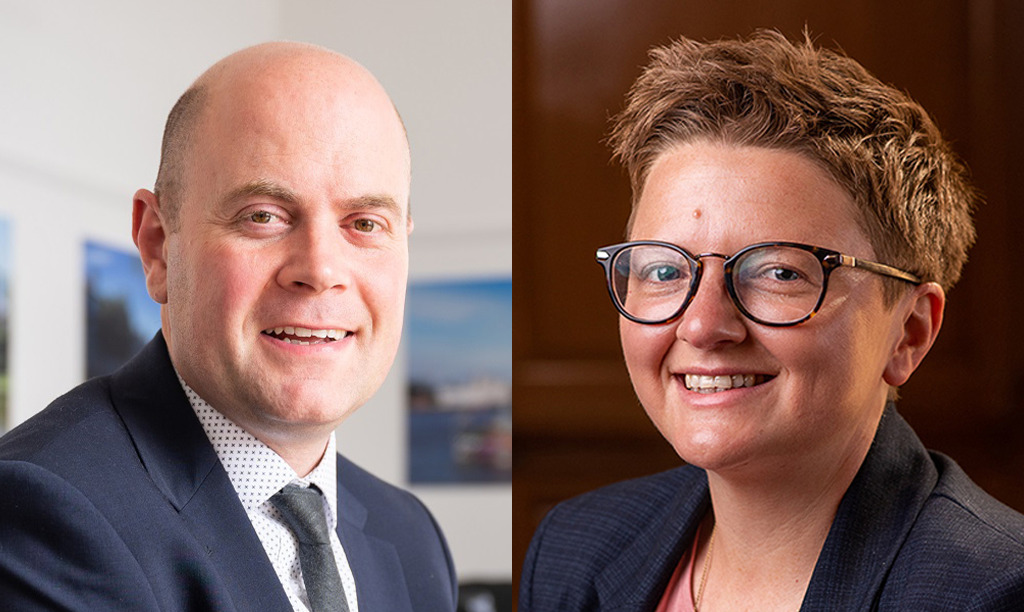My Place | Liverpool
Throughout August, Place North West will be featuring reflections from property professionals on the towns and cities that shaped them, and how the fabric of these places has changed along with their vision for the future of their homes.
In the first in the series, Alison Carroll, development project manager at Ask Real Estate, reflects on her upbringing in Liverpool and the steps the city needs to take to continue its renaissance.
Liverpool has always been, and still is my home, other than a brief trip down the M62 to study at the Manchester Metropolitan University. It has certainly shaped me as an individual and as a property professional.
The city has seen so much change just in my lifetime. From the standout development of new commercial buildings to the emergence of a world-class shopping core and thousands of modern homes to house future generations of Liverpudlians. It’s unrecognisable from even just a decade ago.
Maintaining a long tradition, Liverpool continues to be the north’s cultural beacon on a global stage and as the city grows and evolves it is vital that this is protected and not eroded in the name of regeneration.
Thankfully Liverpool Council has a robust masterplan in place which will serve to protect the city’s heritage and personality whilst enabling continued world-class development of key areas. Soon the city’s knowledge quarter in the eastern gateway will deliver over 1.8m sq ft of space for science, technology, education, health and residential development. The jobs created by this expansion of business will ensure that Liverpool’s next generation continues to prosper.
I’m excited by the Ten Streets campaign to support the Strategic Regeneration Framework which aims to protect and develop Liverpool’s distinctive personality and purpose. It is so important that as the city grows, and change inevitably comes, that we protect the essence of what makes Liverpool unique.
If the Council can deliver on its vision for Ten Streets it will encourage even more people into the creative industries and we’ll see the development of more artistic workspaces, theatres and music venues.
Culture has played such an important part in Liverpool’s history and it continues to do so today. The superb maritime museum and the buildings that have evolved around it attract so many visitors and the new M&S Bank arena next to the Albert Dock is a superb addition to the city. Liverpool has some extraordinary assets such as the maritime architecture which provides a great historical backdrop to the emerging £5.5bn Liverpool Waters scheme.
I was so proud of my home city when The Three Graces were granted UNESCO World Heritage status. At the time I was working on the Mann Island scheme on the waterfront and it was clear that it was going to be another notable moment of global recognition in the city’s remarkable history.
Most people think of the city centre and the waterfront when they picture Liverpool but few probably know that it also ranks 10th in the country for green city space with its expanse of parks. Sefton Park and Calderstones Park are not only great landmarks and destinations but are superb venues for outdoor theatre and concerts.
Cities need green spaces so the people can breathe and thrive and to encourage communities to come together. I’d like to see Liverpool maintain, expand and protect that in the future.





“As the city grows and evolves it is vital that this is protected and not eroded in the name of regeneration” – very well put Alison. This is what distinguishes Liverpool from bigger, better-connected northern cities; the city has done very well with a culture/heritage-led offer; may this continue.
By Pool of Life
The city might rank 10th for green space but when it’s the fourth biggest city that isn’t so great. I agree we need more green space, we need much more, we’ve lost a lot of big trees in the city centre in recent times while other places not only have plans to add them but have added them.
Considering the weedy and half dead sticks planted outside a half dead St Johns market, I don’t know where the confidence for their other plans comes from.
Appreciation for the aesthetic (or the heritage title) isn’t something I detect coming from the council.
By Jamie
Liverpool is actually the 7th largest behind Southampton-Portsmouth and way way behind other well known large northern cities.
By Anonymous
@Anonymous you mean Liverpool city region with a metro population of 2,241,000? Boring troll.
By Gary
Ed- not sure on the brief but it would be great to get a bit more personal info and a quirky alt view rather than a corporate one. I want to understand the nitty gritty of growing up in a place and what’s changed from then to now for someone growing up.
By AltView
Leeds, Sheffield, Manchester and even Bradford have more green space.
https://www.theguardian.com/cities/gallery/2017/jan/05/green-space-uk-largest-cities-mapped
As far as I can tell they all need a few more trees though.
By Dingaling
London then Liverpool
By Anonymous
Does anyone really define cities by expanded boundaries which bear no relevance to the actual city they are part of? Liverpool is one of the most famous cities on the planet.Whether it is 7th or 70th in a list of our biggest cities does not alter that. Comparing it with Portsmouth and Southampton is like comparing New York with Kansas City.
By Elephant
Liverpool in my opinion and I’m from NZ is better than any Northern City , it has more going for it
By Jason
According to Historic England Liverpool has the finest Victorian Parks in the country!
By Roscoe
‘Leeds’ is about 35% hills with sheep on them. West Yorkshire only really counts as an ‘urban area’ because the population just about joins up via very narrow gaps between the hills. Even ‘Greater’ Manchester includes vast moorlands and mosses. The Liverpool area sits on the relatively flat lands of south west Lancashire, Cheshire and the Wirral peninsula. Its urban area is in places is divided by just a couple of flat fields. Culturally Liverpool is a huge city, one of the biggest in the country and even in ‘cold’ numbers the size of the area that identifies with Liverpool puts us right there at the top. It’s not surprising. In the early 20th century the central city alone had a population of about 800,000 without the other ‘Merseyside’ boroughs; Birkenhead, Wallasey, Bootle etc. Leeds was tiny by comparison. These people never went away. Their decedents are in Skelmersdale, Kirkby and Runcorn, as well as in Formby, Southport and the Wirral. There is also a huge Liverpool diaspora and many of them come back, all the time. They don’t forget their routes. Liverpool is vast, and the ‘idea’ of Liverpool is even bigger than the place.
By Roscoe
I agree with a lot of what you say Roscoe but as for people not forgetting their roots? There are plenty of Scousers waxing lyrical about it being carved on their hearts from Surrey and Buckinghamshire. We all know who they were and are.
By Elephant
Yes, Elephant, but as with everything you have to talk generally and I did say many of them come back. Some of those that left for good have nevertheless made efforts to put something back. An obvious example is Paul McCartney who set up LIPA in his old school. LIPA now includes not just a performing arts school but also a primary school and a sixth form college located in that area of the city centre we now call the Georgian Quarter, but which, by the 1980s, had declined into one of the poorest neighborhoods in Britain. It’s now part a a bright new district between the two cathedrals.
Many others stayed. Ken Dodd as everyone knows lived in Knotty Ash all his life. His legacy is now supporting many Liverpool charities from Alder Hey Children’s hospital to the new Shakespeare theatre in Prescot.
The point is that the city has a strength of character that engenders a sense of loyalty and even pride, dare I say, that might baffle some outsiders, but which nevertheless helps us pull together and is proving vital as we continue to reinvent ourselves.
By Roscoe